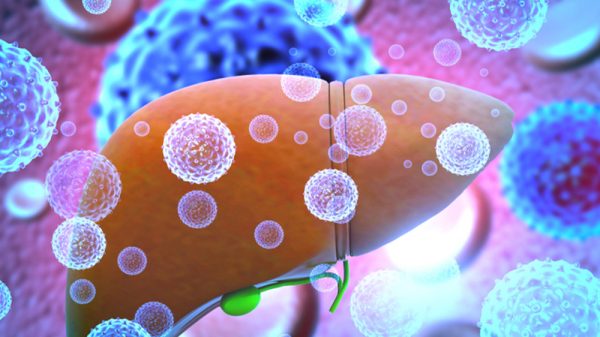For people with no medical background or for those who did not study medicine, differentiating between the various illnesses can be quite challenging. And while a medical professional such as a doctor can help diagnose your current health status or possible illness, it can be helpful at times to be able to make an educated guess as to what your medical condition could and might probably be. One such confusing mix up of medical conditions are ascites vs edema. Are these two conditions the same? How do we know if we have one and not the other? This article will answer these questions so if you want to know more, read on!
Ascites vs Edema: A General Overview
Ascites
The abdomen has organs that are enclosed in a membrane or a sac referred to as peritoneum. Usually, this peritoneal cavity will only contain fluids in small amounts. Women, though, can have fluids in the said cavity in varying numbers due to their menstrual period. Generally speaking, ascites refers to a fluid increase in the aforementioned cavity which is abnormal.
A number of different health conditions can lead to fluid accumulation and the possible reason why ascites form can be different based on each unique characteristic of each disease. Cancer that has spread to the peritoneum can lead to leakage of fluid that is direct while other forms of diseases can lead to the buildup of sodium and water in the body. The said fluid can then result in the peritoneal cavity leakage.
However, one of the most common reasons for the development of ascites is liver disease and the liver’s subsequent reduced capability to produce proteins in adequate amounts to help in the retention of fluid in the blood along with the poor flow of fluids to the liver due to scarring or cirrhosis. This is because individuals with a healthy liver will usually have regular oncotic pressure to hold water in the blood. The proteins can then exert some sort of pull that can prevent the molecules of water from penetrating into surrounding tissues and the capillary blood vessels. As this health condition progresses, the ability of the liver to produce proteins is greatly reduced resulting in the said oncotic pressure to be reduced as well due to the body’s lack of total protein leading to water leaking into the tissues surrounding the peritoneal cavity.
So what then is Edema?
Aside from edema, the excess fluid can also be transported to the body’s other parts in the form of swelling or edema. Edema can occur in many different parts of the body such as the chest cavity, legs, and feet. This kind of excess fluid can also lead to the lungs accumulating fluids as well. The symptoms of edema will usually depend on where the swelling occurred.
Possible causes of Ascites
Some of the possible causes of ascites are listed below:
- Cirrhosis- This refers to a disease of the liver that sees the healthy cells of the liver being replaced with scars (scar tissue). As the tissues of the liver are lost, a liver failure that is progressive occurs. Alcoholic hepatitis or alcoholic liver disease and fatty liver are some of the cirrhosis’ more common causes.
- Liver failure that is acute– This condition can lead to the development of ascites. Acute liver disease can be the result of liver injury that is acute which includes the adverse effects of drug abuse and medications such as an overdose of acetaminophen.
- Budd Chiari Syndrome- This syndrome is the result of hepatic vein blockage which can result in the development of ascites, spleen and liver enlargement, as well as pain in the abdomen.
- Heart failure- This condition refers to a condition where the heart is unable to sufficiently have fluid pumped in the blood vessels. This can result in a number of health issues but the major concern for this condition is that fluids can get backed up into other organs such as the lungs which can result in organ failure. This overload in fluids can lead to peritoneal cavity leakage and ascites development.
- Nephrotic Syndrome- This refers to damage to the kidneys that can have the proteins leaked in the urine thereby decreasing oncotic pressure resulting in the formation of ascites.
- Pancreatic Disorders- Pancreatitis or pancreas inflammation can lead to the development of ascites through a number of different ways. Inflammation of the pancreas can lead to the accumulation of fluid as part of the body’s response to the said inflammation. On the other hand, pancreatitis that is chronic can lead to patients being malnourished resulting in the body’s total protein being significantly decreased, ascites formation, and oncotic pressure that is lost.
- Peritoneum irritation- This condition can lead to fluid leakage as part of the process of inflammation. This kind of inflammation can be the result of infection or cancer (malignancy).
- Polycystic ovary syndrome (PCOS)– This disease can also lead to the formation of ascites. While ovarian cancer may not have any symptoms during the first phase of the disease, women may actually have cancer detected due to ascites that may develop or form. Another condition that can cause ascites is known as Meigs syndrome which is a form of tumor that is benign which is referred to as a fibroma which can have pleural effusion and ascites. The ovarian surface is hard and can contribute to the peritoneum’s irritation which can result in fluid leakage.
Symptoms and Signs of Ascites
People who have ascites will have some form of distinction depending on the underlying cause of the ascites which are those who have liver cirrhosis and those who have peritoneal cancer. Those suffering from pain can experience more pain compared to those who are suffering from liver disease. Regardless, both conditions can still exhibit the same kinds of signs and symptoms such as swelling of the abdomen, difficulty breathing, swollen legs, bruising that is easy, enlargement of the breasts, and encephalopathy resulting in confusion.























